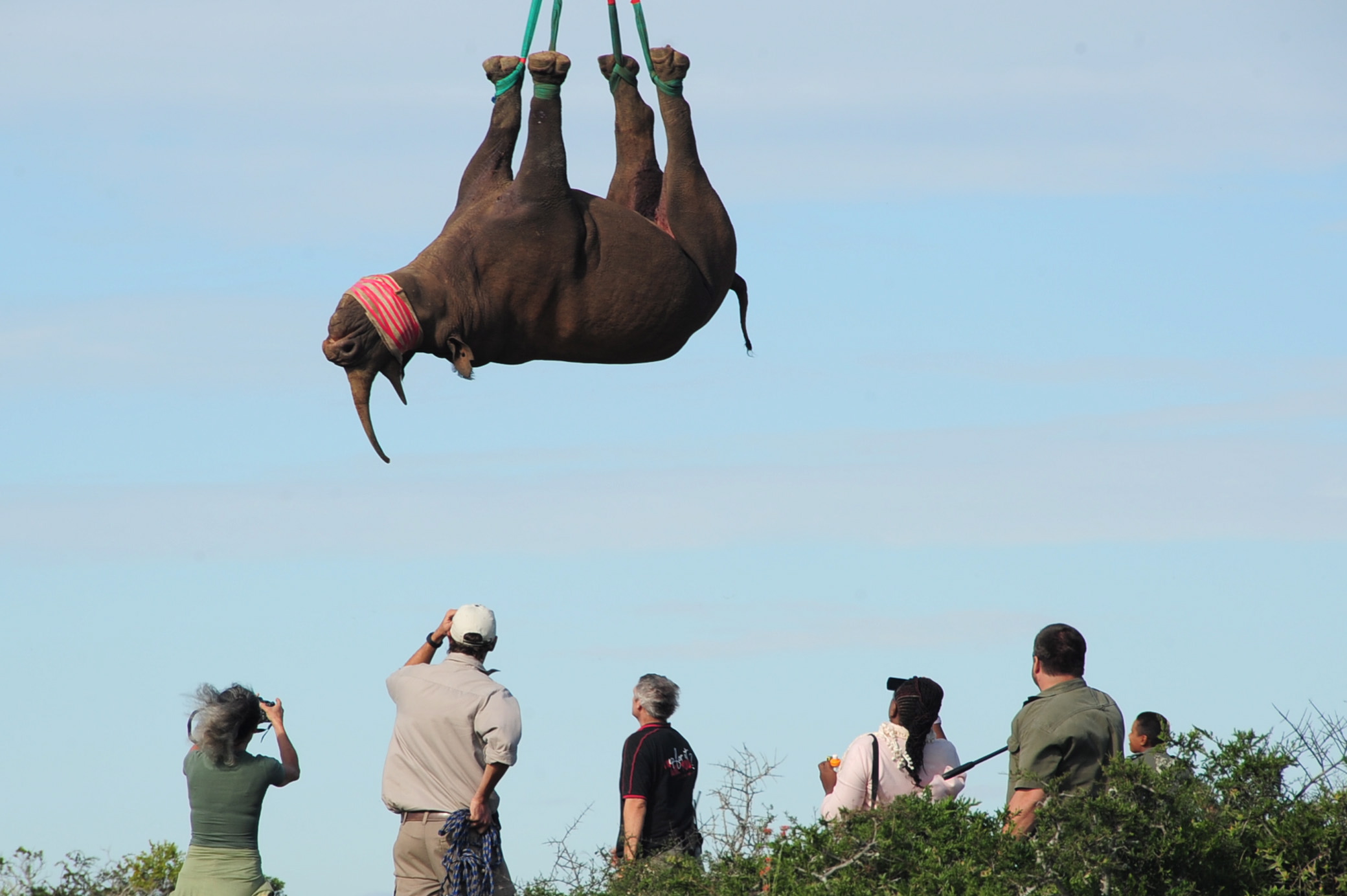This story was first published in The Conversation.
A recent study that suspended rhinos upside-down by their ankles from a helicopter must have been a shoe-in for the award’s judges, securing the 2021 Ig Nobel Transportation Prize. But while hanging rhinos produce spectacularly absurd photographs, behind the award and the study lies a serious business.
/file/dailymaverick/wp-content/uploads/2021/09/0000161037.jpeg)
Rhinos are in trouble. There are five species of rhino, and all are endangered. The three-tonne white rhino is the least endangered, yet there are still only an estimated 20,000 of them left in the wild. The species hung upside-down in the study is the black rhino, weighing in at 1.5 tonnes and with an estimated population of just 5,000.
In attempts to protect rhino populations, conservationists have tried dehorning (to try to make rhinos less desirable to poachers), translocation (moving rhinos, including upside-down via helicopter), and even resurrection (creating embryos from the eggs and sperm, or even the DNA, of dead individuals).
We translocate rhinos because they live within guarded, fenced areas to keep them monitored – and protected, in theory, from poaching for rhino horn, their main threat. But this prevents animals from colonising new areas, recolonising vacant areas, or mixing genes between areas.
So conservationists have to lend a helping hand – or helicopter – to place rhinos into new regions. But until the Ig Nobel Prize-winning study, we weren’t entirely sure whether this upside-down transportation was actually safe for the rhinos involved.
/file/dailymaverick/wp-content/uploads/2021/09/0000161029.jpeg)
Hanging herbivores
The capture and translocation of large mammals can be dangerous and disruptive to the welfare of the animals concerned. Big African mammals, including elephants, giraffes, and rhinos, are physiologically sensitive. The entire capture and translocation process can result in psychological and physiological stress. If such animals are given too great a tranquiliser drug dose, or are left in the wrong position under tranquilisation, they can die.
Historically, wildlife translocation methods were informal and experimental, with successful methods spreading by word of mouth. Increasingly, this ad-hoc approach has been replaced by formal scientific research, either supporting perceived wisdom, or providing novel innovations.
So it’s important, for animal health and welfare reasons alone, for the procedures applied to catch and move big animals to be as safe and non-disruptive as possible.
For a number of years, African rhinos have been translocated by
style="font-weight: 400;">hanging them upside-down suspended from a helicopter, blindfolded and under tranquilisation. As well as enabling the capture and short-distance transfer of rhinos from areas inaccessible by road, transport by helicopter can mean shorter journey times, so it can be preferable for the rhino where it’s practical to do so.




 SOUTH AFRICA, MARCH 29: A rhino is airlifted by helicopter on March 29, 2012 in South Africa to an undisclosed location to protect the endangered animal from poachers. (Photo by Gallo Images / Foto24 / Theo Jeptha)
SOUTH AFRICA, MARCH 29: A rhino is airlifted by helicopter on March 29, 2012 in South Africa to an undisclosed location to protect the endangered animal from poachers. (Photo by Gallo Images / Foto24 / Theo Jeptha) /file/dailymaverick/wp-content/uploads/2021/09/0000161032.jpeg)